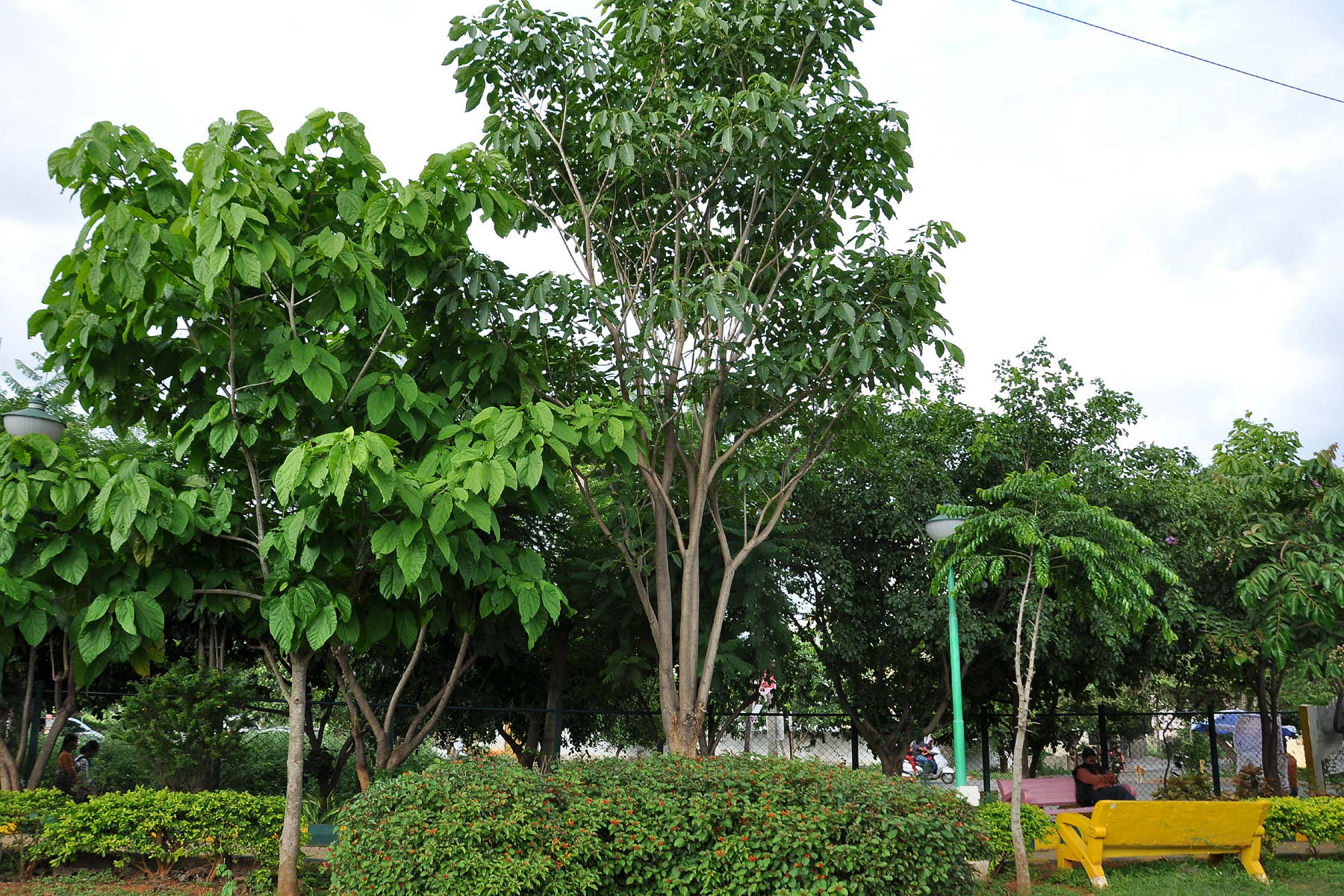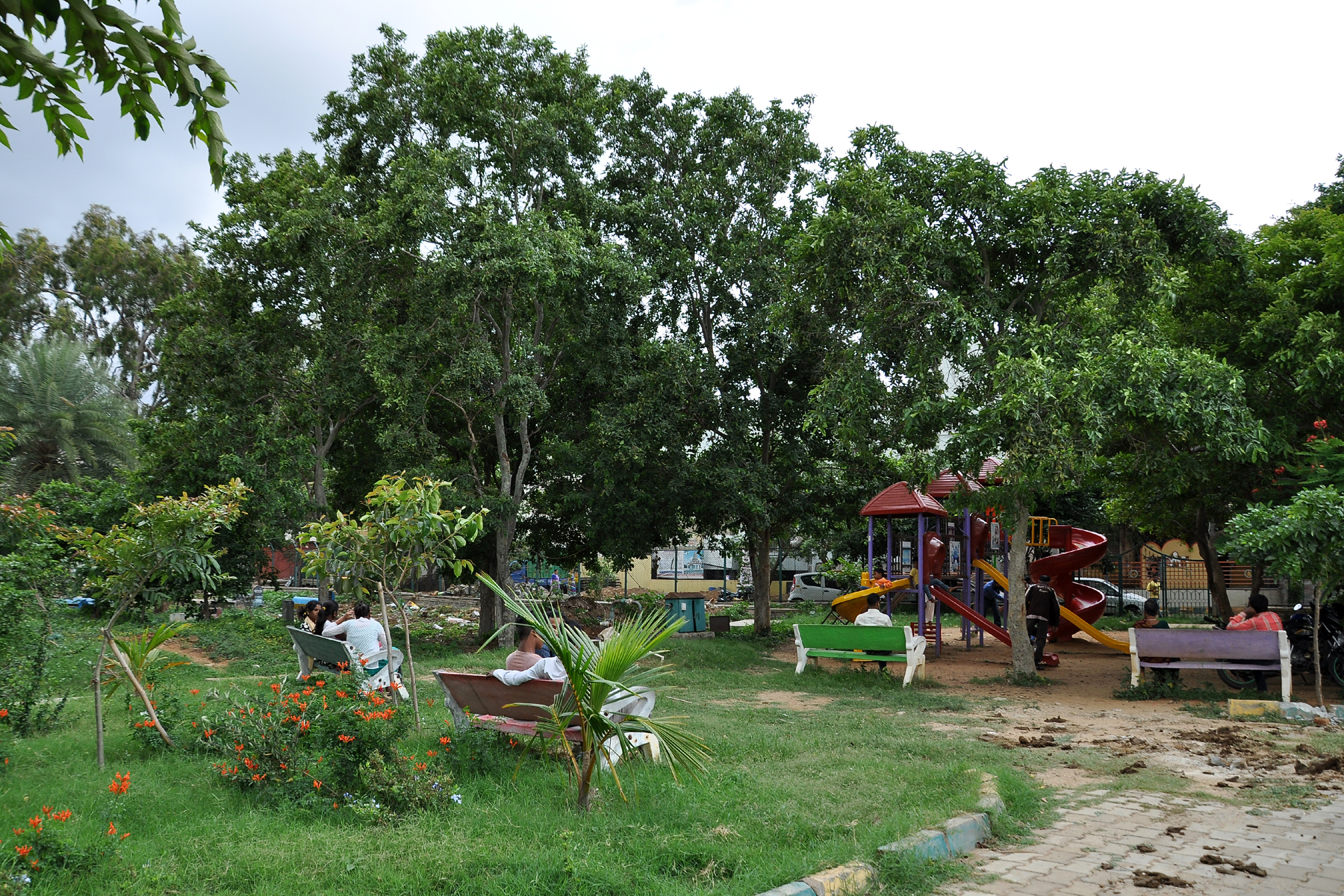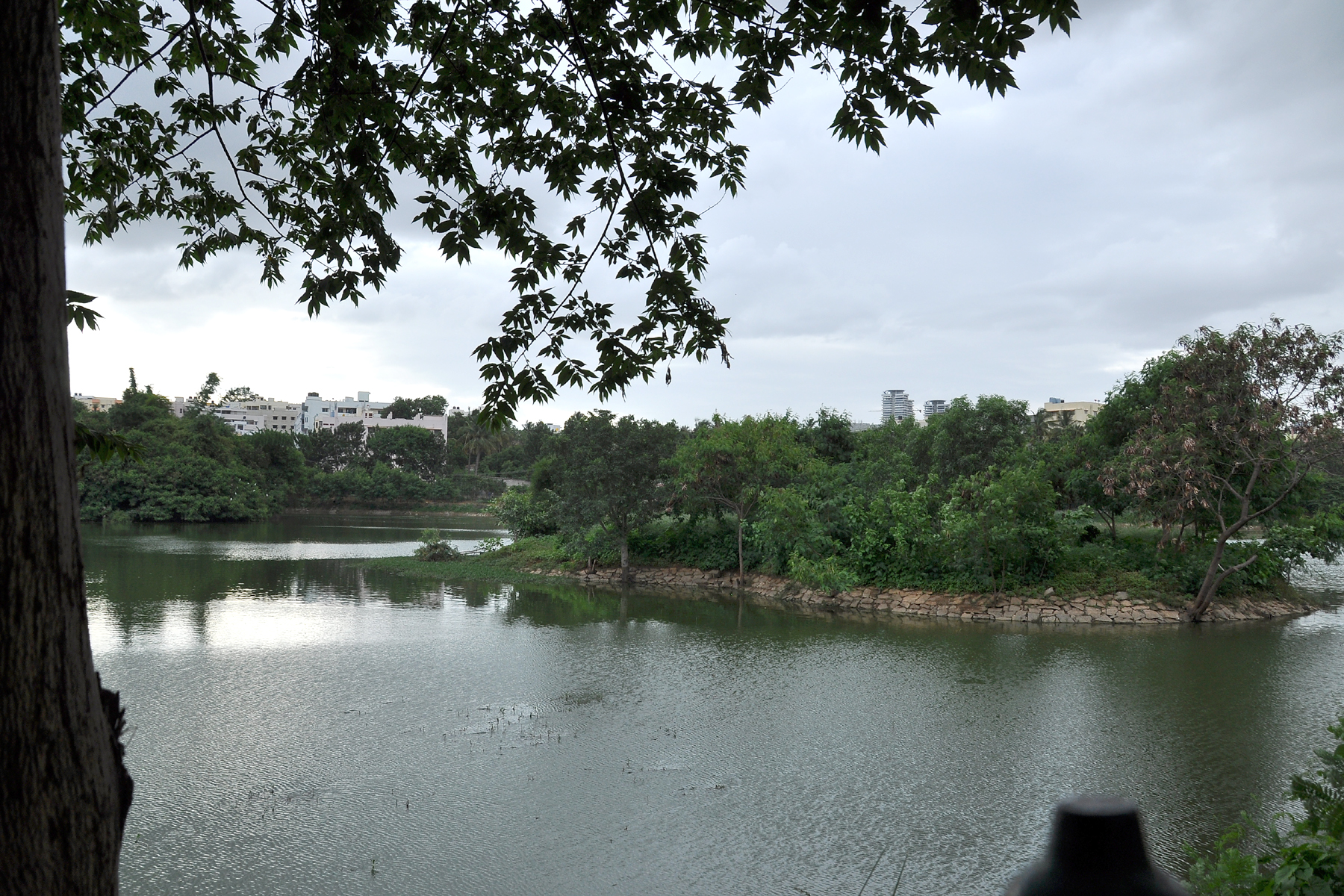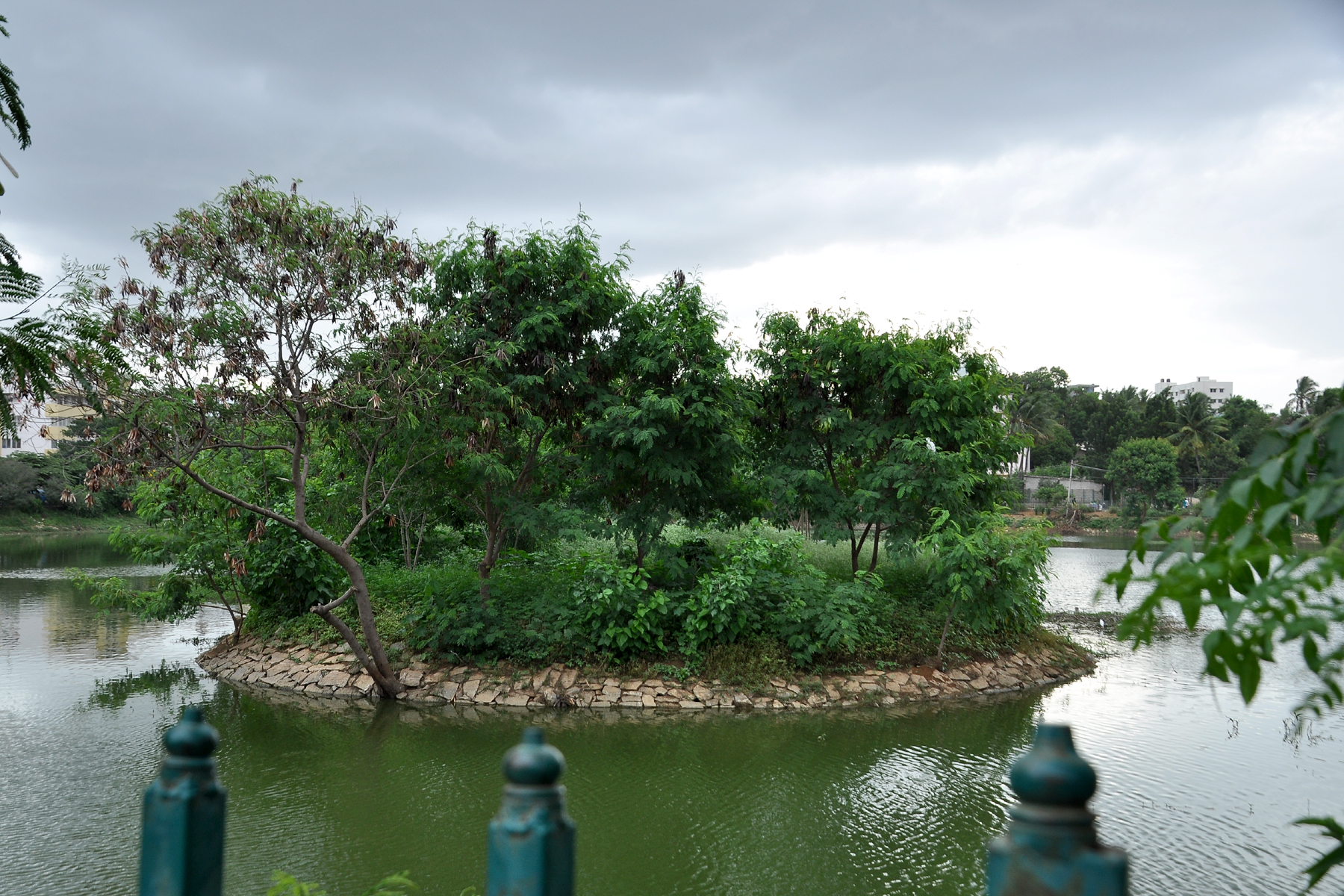This Superhero Conservationist Is Making Bengaluru the Garden City Again & Saving Its Dying Lakes
The IT graduate-turned-green warrior has so far afforested 300-400 hectares of land since he got into the arena a decade ago.

In a city teeming with millions of people and vehicles, where shades of grey have outstripped green, winds of change are blowing in. Effort is on by many groups to bring back the green cover in Bangalore and reinstate it as the ‘Garden city’.
But rather than plant some tree, or merely ornamental ones, the need of the hour is planned afforestation. What is needed, according to experts, are eco-habitats based on native species of plants. A mini-jungle, like the one at Purnaprajna Layout park in Uttarahalli.
The hardy Honge (millettia pinnata) stands guard all around to the many medicinal and traditional tree species standing 6-7 feet tall, two years since being planted. You will find Arjuna, Kadamba, Banaba, Neem, Jamun, Mahua, and many plants of the ficus genus like the Mysore fig (Goni) and cluster fig (Athi) which are known as keystone species for hosting many birds, insects and mammals. Most of these are traditional species with many medicinal attributes.
You might also enjoy: Meet the Man Who Is Single Handedly Rejuvenating Salem’s Dying Lakes
The undergrowth also contributes to the eco-habitat. Except for the parthenium, which is weeded out, you can find wild grasses growing all around with tiny pink, yellow and white flowers.
Two streets across, yet another park looks inviting with its lush green growth and mix of herbs and medicinal plants. The air comes as a balm for the body and mind! Plants, grass, shrubs and trees serve to make it a complete ecosystem, with benefits.
This is exactly as envisaged by its developer, T C Ravindra.

This IT graduate turned green warrior has so far afforested 300-400 hectares of land since he got into the arena a decade ago. In Bangalore alone, he has planted 5-6 lakh plants, he says proudly, adding that the survival rate is 98 percent.
Trail from Shimoga to Bangalore
Hailing from Shimoga where his family grew arecanut and pepper on the land, Ravindra dabbled in the medicinal plant white musli, (chlorophytum borivilianum) roots of which are used to treat impotency. That was till the market crashed and he shifted to propagating various herbs and spices at his outlet IndusHerbs, supported by Prashanth Prakash. Around that time in 2009, he started an initiative ‘GoGreen Bangalore’ to popularise 20 essential plants which can be grown in the city homes. These include tulsi, giloy, ashwagandha, lemongrass, madhunashini, peppermint, etc.
It was also an opportunity to spread awareness on native medicinal tree and plant species. Around this time, he met veteran forester Yellappa Reddy. Reddy is on the board of various trusts and foundations today and has been actively encouraging sacred and medicinal plants, besides leading river rejuvenation projects.
Ravindra absorbed the knowledge and was soon reading up on mythological links to plants.
He can talk to you about the five species that make the ‘panchavati’ ideal for use in schools given the serotonin they release.

The same can be said of how saraswati vana, with eight species, is best suited for schools. Or why the Ashoka tree (saraca indica, and not the Asopalav popularly known by the same name) is ideal to keep away depression, and how it is beneficial for women in many ways.
Ravindra has developed a few ‘theme parks’ in the state, based on trees that are cited in some of the slokas such as Navagraha vana, Ganapati vana, Nakshatra vana, charaka vana, and so on.
Reviving lakes
For three years Ravindra has been associated with NGOs like United Way of Bengaluru in afforesting the city and reviving the lakes. While he sees his role as a ‘vendor’ in the CSR funded activities secured by the NGOs, his involvement from planning the species, planting them and nurturing them is no small task. Employing a small army of 120 gardeners, he is able to keep an eye on the parks and lakes.
At Uttarahalli Magikere lake, his planting of various species has helped recharge the water and bring up the water levels. Singapore cherry species provide a canopy for the joggers while cool corners have a plethora of medicinal trees thriving. Gooseberries, Hibiscus, Kanaka Champaka (Pterospermum acerifolium), Ashoka, Kadamba, Rudraksha, Champaka, Nirgundi, Vasaka, Punnaga dot the walkway while Vetiver grass (lavancha) has been grown all around the lake near the shore. Small artificial floating islands made from recycled materials carry the Canna plant and other species known to absorb heavy metals and act as a water purifier, enabling the aquatic life to thrive. An ideal solution for many lakes tainted with potassium residues.
Ravindra believes that Bangalore needs tree parks or ‘habitats’.
He notes that there are around 800 parks in the city that can be converted into aesthetically-pleasing and beneficial tree parks.

“There is no point in planting silver oak and other exotic species in the city. They do not attract birds and butterflies and being hollow are prone to being toppled at the first strong gust of wind,” he will tell you.
Butterflies, as he adds, need not just nectar plants but also host plants on which to lay eggs and multiply. The proof of what he says is there in the parks he has developed where you can see swarms of butterflies flitting around. He is planning on growing some species that will attract fireflies. What more can one ask for in the concrete jungle!
He emphasises that there is a lot of space in and around the city to plant trees. For instance, he is involved with NDRI where the native tree species are being planted on 70 acres. Ravindra has taken up work in 30 parks and 15 lakes in the city. Besides Uttarahalli lake, he was also involved in the eco-system development at Kaikondrahalli lake in Sarjapur, Kowdenahalli lake, Rachenahalli lake and Munekulala lake.
This man’s passion extends beyond lakes and parks to river restoration, biodiversity parks and eco-therapy.

Associated with Art of Living in river restoration of Kumudvati and Palar rivers at Kaivara, Ravindra has been busy planting the native species along the identified flow of the erstwhile river. Efforts are on to revive water tanks and ponds too by planting trees.
Ravindra points to the Nandi Hills that are home to seven rivers (Arkavati, Palar, Chitravathi, Dakshina Pinakini, Uttara Pinakini) and notes that the region needs immediate afforestation to “prevent it going the Tirupati way”. He has planted a few Makali Beru or Sarsaparilla (decalepis hamiltonii) which once thrived in the region but was exploited by the pickle and drug industry. It is listed as endangered by the IUCN. The roots can pierce the rocks, he explains, and help recharge the rocky, dry regions.
You might also enjoy: These Bengaluru Engineering Students Want to Light up the City Using Highway Wind Turbulence
He has also been working actively with Tejaswini Ananthkumar’s Adamya Chetana in afforesting the city and surroundings.
Vertical gardens
He has also helped build vertical gardens for many establishments. Some of these are along the compound wall or the main wall of the building. Two of the Yeshwantpur flyover pillars were also recently fitted with plants all around and supplied with water using a clever percolation method. The flyover has a handicap due to the direction that does not allow for any sunlight so there was limited choice of plants. For the flyovers medians too, he believes there are suitable species that need to be planted.
Ravindra is working on a similar model where park seats can be fitted on the backrest with plants that supply oxygen to those seated.
Any afforestation must include not just trees, but shrubs and creepers that provide ground cover to prevent excessive evaporation, he emphasises.

Working with BET he is an active participant in the bio-diversity park at Bangalore University, Kengeri. The 800 acre land has around 300 native species including the rudraksh tree, sandalwood and western ghat species. It is home to almost 3 lakh plants, many supplied by Ravindra from his nursery at Baglur.
Herbs and oils outlet
When he is not busy greening the city, he is at work at IndusHerbs, his outlet for dried herbs like amla, tulsi, neem, henna, rosemary, basil, oregano, asparagus, stevia, etc. He also provides bulk supply of herbs, herbal extracts and essential oils like lavendar, eucalyptus, lemon grass, peppermint, etc.
His projects go beyond the country. Ravindra is a consultant on agro forestry and spice cultivation on 300 acres in Sri Lanka. He also exports herbal extracts and essential oils.
If you are a firm interested in doing your bit for the city, or any city, Ravindra could be your CSR consultant. For any organisation with land offering scope for major afforestation, he can not only supply saplings and be a guide, but also get the job done for you. And if you are an individual he can be your terrace garden or landscape consultant. In fact, on anything from tree planting to farming, he is a one-stop solution. Just give him a call at 9845168734.
Written by Jayalakshmi K.
Like this story? Or have something to share?
Write to us: [email protected]
Connect with us on Facebook and Twitter.
NEW: Click here to get positive news on WhatsApp!
If you found our stories insightful, informative, or even just enjoyable, we invite you to consider making a voluntary payment to support the work we do at The Better India. Your contribution helps us continue producing quality content that educates, inspires, and drives positive change.
Choose one of the payment options below for your contribution-
By paying for the stories you value, you directly contribute to sustaining our efforts focused on making a difference in the world. Together, let’s ensure that impactful stories continue to be told and shared, enriching lives and communities alike.
Thank you for your support. Here are some frequently asked questions you might find helpful to know why you are contributing?


This story made me
- 97
- 121
- 89
- 167










